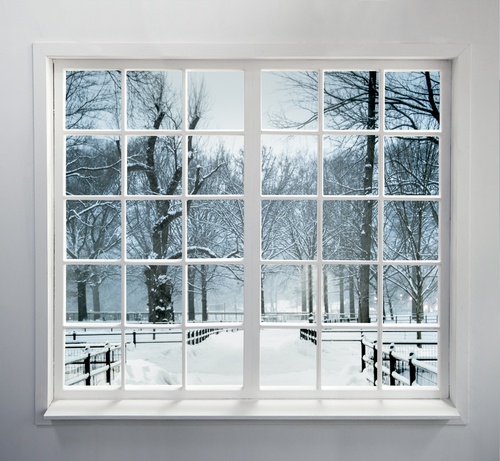 Colder weather is just around the corner. Are your windows ready to keep out the chill? Whether you’ve just moved into a new home or you’ve been in your current home for years, it’s a good idea to prepare your windows for dropping temperatures. Here are some easy solutions to weatherize your windows during colder months.
Colder weather is just around the corner. Are your windows ready to keep out the chill? Whether you’ve just moved into a new home or you’ve been in your current home for years, it’s a good idea to prepare your windows for dropping temperatures. Here are some easy solutions to weatherize your windows during colder months.
Check for leaks
First, you need to know exactly what you’re working with before you begin. Start by visually examining the inside and outside of windows for missing caulk and obvious gaps. This will give you a big clue about where you’ll find the worst leaks. Once you’ve completed a visual inspection, then move on to a smoke test. On a windy day, close all the windows and doors in the house. Then pass a burning incense stick around the perimeter of each window. You’ll be able to clearly tell where your windows are leaking by how the smoke behaves. If the smoke starts blowing inward, then you’ll know you have a leak.
Replace caulk
Anywhere you’ve discovered missing or damaged caulk around a window’s exterior should be replaced. Remove all the old caulk and any peeling paint. Clean the area thoroughly with soap and warm water and wipe the area dry. Then apply a thin bead of caulk around the outside. Be sure to choose caulk that is appropriate for exterior use.
Install weather stripping
If there are leaks between the window and the frame, then weather stripping can help. Adhesive-backed weather stripping is inexpensive and easy to apply. Most weather stripping will last between one and three years, which makes it a very affordable option.
Add plastic film
One of the easiest and most inexpensive ways to weatherize your windows is with plastic film. You can find this product at any home improvement store. To install, cut a piece of the plastic to the size of the window and secure with tape. Then use a hair dryer to shrink the film and smooth out any wrinkles. If you really want to get serious with this solution, then add a layer of bubble wrap to the window before you secure the plastic film. This is great for windows you don’t necessarily need to see out of, like basement or attic windows.
Install rigid foam
If you want to take your window insulation to the next level, then try using rigid foam attached to 3/8-inch drywall. This is also a good solution for basement and attic windows for the winter months. Cut each piece to fit tightly within each window frame. They should stay in place without having to secure them, and they are easy to remove when warm weather returns.
Use draft snakes
Finally, if you are looking for a truly thrifty solution to your window leaks, then try using draft snakes. You can buy them online or easily make them yourself using fabric and rice. Simply place these draft snakes on your windowsills, and they will stop the cold air from entering your home. They’ll last for years and can even be made to match your décor.
Compliments of Virtual Results